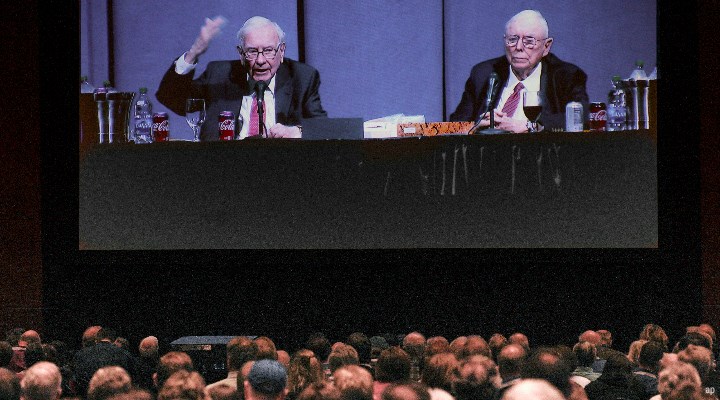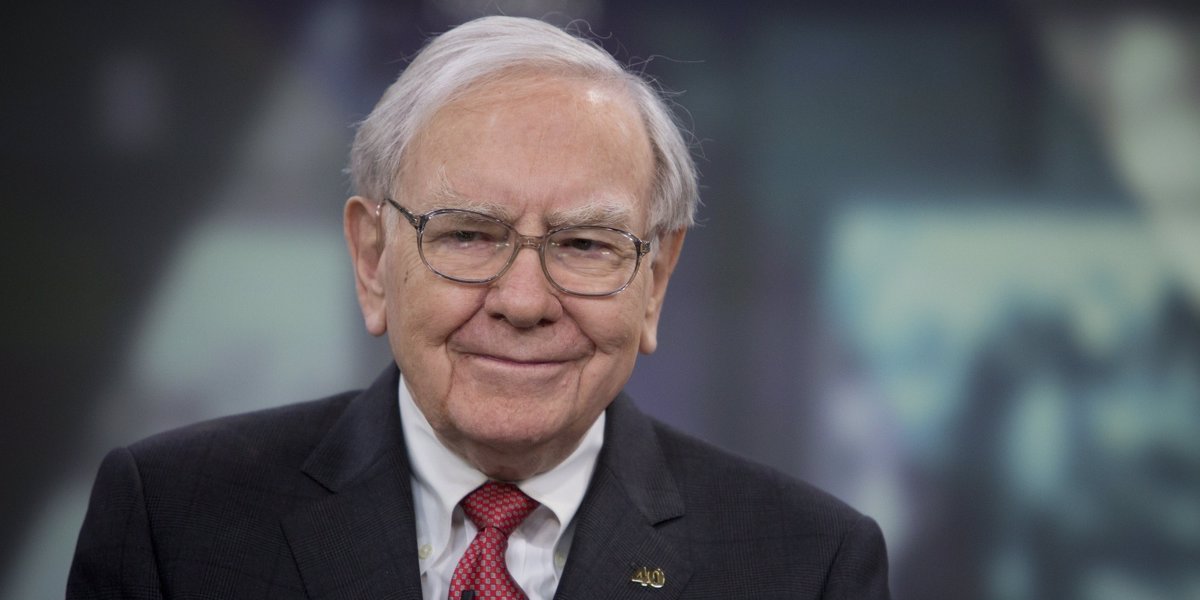
As we look ahead to Berkshire Hathaway’s annual meeting tomorrow, we have compiled a group of insurance-related questions, most of which are focused on the competitive positioning of insurance company Geico, as well as contributions from the recent purchase of Alleghany.
We also have some questions about BNSF Railway’s reluctance to adopt precision scheduled railroading, Berkshire Hathaway Energy’s opportunities should consolidation pick up again in the North American electric utilities market, any bolt-on deal potential for Berkshire’s manufacturing, service, and retailing segment, and cash management priorities—especially with regard to insurance reserves and capital allocation and distribution. That’s a lot!
Question 1: Why Has Geico’s Performance Been so Inconsistent?
Geico generated average annual earned premium growth of 8.2% during 2017-21 and 9.4% during 2012-21, despite generating negative 1.3% earned premium growth in 2020 and mid-single-digit top-line growth in 2019 and 2021.
However, its loss ratio went from 75.9% in 2012 to as high as 86.6% during 2017—averaging 80.6% and 79.8% during the past 5 and 10 calendar years. Geico has tended to use a blunt-force approach to its underwriting, pursuing growth more aggressively than peers and at times showing a willingness to absorb higher loss ratios as it maximised its expense ratio edge (600-700 basis points below the industry average). That said, Geico’s loss ratio was abnormally high during 2016-18, when the company was aggressively underwriting while many of its peers pulled back from the market in response to escalating claims and losses. Its expense ratio also took a hit during 2020-21 as it dealt with depressed earned premium growth as a result of credits and policy cancellations tied to the pandemic. This left the combined ratio at 95.6% during 2017-21 and 95.7% during 2012-21 on average. Meanwhile, the company saw its market share stagnate around 13.5% during 2018-20 before recovering to 14.3% in 2021.
On the other hand, Progressive Auto Insurance, which is Geico’s closest competitor in the direct-selling channel, generated earned premium growth of 14.6% and 12.4% on average in the past 5 and 10 years with its direct-to-consumer private auto insurance arm. It produced a combined ratio of 92.4% and 93.5% on average for those periods. On top of that, its overall private auto insurance business (which includes its agency operations) generated earned premium growth of 13.1% and 10.3% for those periods, with a combined ratio of 91.2% and 92.7% on average.
While Progressive’s market share had expanded pretty steadily, by about 30 basis points on average during the two-decade period ended in 2018, it jumped close to 300 basis points during 2019-21, finishing last year at 13.7%. The question is: why have the operating metrics between Geico and Progressive diverged so much of late, when both are focused more on direct-to-consumer sales and had for many years been fairly comparable on both a growth and profitability basis? Does it concern you that Geico’s share stagnated in a period when Progressive was picking up a lot of ground? Would it concern you if Progressive were to surpass Geico on a market-share basis soon?
Question 2: Where is Geico’s Telematics Offering?
While Geico is well known for its low-cost auto insurance, we think that in striving for broad geographic coverage, it has had to underwrite more aggressively than it normally would in some markets, undercutting its competitors and underpricing policies relative to their corresponding risk levels, with some of this activity leading to adverse outcomes in the past decade. The solution would be underwriting that is better and more consistent than the company has been achieving with the ratings algorithms it employs to price and predict losses. As such, it has not been all that surprising for much of the past decade to see shareholders and analysts alike ask when we would eventually see a telematics offering from Geico, noting that Progressive had already achieved first-mover advantage with the technology.
The general view is that usage-based insurance technologies like Progressive’s Snapshot programme can provide auto insurers with more accurate assessments of the risks of individual policyholders, allowing them to better segment and price their risks by offering discounts to the safest drivers and charging those perceived to be riskier a more appropriate premium. Knowing [Berkshire Hathaway’s vice chairman for insurance operations] Ajit Jain’s long record of assessing and pricing risk on the reinsurance side, and Todd Combs having taken over supervision of the day-to-day operations at Geico, we would be curious to know either of their views on why the auto insurer has yet to implement telematics, given that more data and information can only enhance the underwriting process, leading to more profitable growth in the long run. If Geico continues to lag its peers on this technology front, doesn’t it run the risk of an adverse selection problem longer term?
Question 3: Has BNSF Railway Put Itself Behind The Eight Ball by Not Adopting Precision Scheduled Railroading?
While BNSF has been besting its closest competitor, Union Pacific, on volume and top-line growth for much of the past decade, it has trailed on a profitability basis. BNSF’s operating ratio has been 400-450 basis points worse than Union Pacific’s on average in the past 5-10 years (as well as 200-300 basis points poorer than the average of all of the other Class I railroads).
With all of BNSF’s peers at this point having adopted precision scheduled railroading (PSR) in one form or another, the expectation is that this outperformance on the profitability line could approach 600-700 basis points for Union Pacific (and 400-500 basis points on average for all of the other Class I railroads), leading to the potential for Union Pacific and other peers to get more competitive on price – being willing to give up some margin to drive share gains.
For several years, BNSF and Berkshire have noted the railroad is in wait-and-see mode when it comes to PSR. With the gap in profitability already widening and likely to widen further from here, where is BNSF with PSR and what are the opportunities and drawbacks that you see from the strategy?
Question 4: What Would it Take For Utilities Consolidation in North America to Pick up Again?
Berkshire’s 2020 annual letter to shareholders noted that Berkshire Hathaway Energy (BHE) “pays no dividends on its common stock, a highly unusual practice in the electric utility industry. That Spartan policy has been the case throughout our 21 years of ownership. Unlike railroads, our country’s electric utilities need a massive makeover in which the ultimate costs will be staggering. The effort will absorb all of BHE’s earnings for decades to come. We welcome the challenge and believe the added investment will be appropriately rewarded.”
BHE has benefited from being part of Berkshire’s larger consolidated tax return, as well as from not having to pay a dividend to the parent company (most of its publicly traded peers pay out as much as 60% of earnings as dividends annually). This has allowed BHE to invest far more capital – upward of $35 billion over the past two decades at the end of 2021 – in renewables (part of that massive makeover referenced in the annual letter) than it would have been able to on a stand-alone basis.
Given that a lot of other North American utilities don’t have the same level of financial flexibility as BHE does, let alone access to the amount of capital that Berkshire can bring to bear on the part of its subsidiaries, we wonder when we’ll start to see more consolidation in the utilities market to effect this massive makeover. Is it a matter of valuation, or are there some other structural impediments keeping us from seeing the level of consolidation that needs to take place in North America? What would it take, in your view, for consolidation to pick up again? Do you agree with the industry’s belief that Berkshire will be one of five main consolidators of North American utilities over the next couple of decades?
Question 5: Is There Anything Structural or Behavioural Keeping Berkshire’s Managers From Pursuing Acquisitions?
One of the perceived advantages of being acquired by Berkshire is that operating under the company’s umbrella provides access to a ton of capital at what we assume would be favourable rates. However, we’ve not seen a lot of outright or bolt-on acquisition activity from Berkshire’s subsidiaries over the past five-plus years, with the average annual outlay for acquisitions being $2.1 billion and the average quarterly outlay being less than $550 million on average between 2017-21.
In the manufacturing, service, and retailing segment, there was some expectation that the 2015-16 purchase of Precision Castparts (which had been a serial acquirer before Berkshire bought it), as well as the early 2015 purchase of Van Tuyl Group (which operates in a fairly fragmented US auto dealership market that has been ripe for consolidation), would lead to more deals over time.
With Berkshire sitting on so much excess cash, it has been surprising to see so few deals being done. Granted, valuations have been less than desirable for many of the types of quality companies that Berkshire prefers to buy, but we would have expected more activity than what we’ve seen the past five-plus years.
So: is there anything structural or behavioural that is keeping Berkshire’s managers (who aren’t named Warren Buffett, Charlie Munger, Greg Abel, or Ajit Jain) from pursuing acquisitions? Is there any hesitancy on their part to ask corporate for capital when they want to pursue a deal? Do you wish that they were doing more to pursue more bolt-on acquisitions? Do you think that this may change once Alleghany Capital is brought on board, given its penchant for pursuing deals more aggressively than perhaps Berkshire has done in the past?
Question 6: What Are The Key Opportunities Once Alleghany Corporation is Folded Into Berkshire’s Operations?
Investment holding company Alleghany Corporation seems to be a good fit for Berkshire, contributing a platform composed of reinsurance and insurance (which accounted for 68% of the company’s revenue last year), Alleghany Capital (which contributed 31%), and corporate-initiated activities, primarily run through Alleghany Properties.
Our expectation is that Alleghany’s reinsurance business, composed of its property (24% of total earned premiums in 2021) and casualty/specialty (53%) arms, would be folded into Berkshire Hathaway Reinsurance Group under the property/casualty segment. We foresee the specialty lines, composed of RSUI (17% of total earned premiums in 2021) and CapSpecialty (5%), being attached to Berkshire Hathaway Primary Group. We envision the operating businesses within Alleghany Capital being folded into Berkshire’s manufacturing, service, and retailing division.
We don’t expect much in the way of enhanced underwriting profitability through improved loss ratios for the different insurance businesses that Berkshire is acquiring through the Alleghany purchase, given that they appear to be within norms. But we do believe there could be improvements on the underwriting expense front as Alleghany’s subsidiaries benefit from the size and scale of Berkshire’s insurance operations.
We also think that Alleghany’s insurance investment portfolio could be adjusted to include more equities, and that the operating subsidiaries in Alleghany Capital, which have been fairly acquisitive, could tap into Berkshire’s cash hoard to increase the amount of outright and bolt-on acquisitions they’ve been doing. Do you envision these as being the key opportunities for Berkshire once Alleghany is folded into its operations? Are there other opportunities that perhaps we are not seeing that could enhance the value of the deal?
Question 7: How Much Can Berkshire Reallocate Alleghany’s Investment Portfolio Into Equities?
During the past five years, just 17% of Alleghany’s insurance investment portfolio on average has been dedicated to equities, while 77% has been allocated to fixed income and 6% has gone to other unclassified investments. Berkshire had 92% of its insurance investment portfolio in equities on average and just 8% in fixed income. Berkshire has generally been given more leeway by the insurance regulators to invest more in equities, given that its insurance subsidiaries are not only overcapitalized, but also hold significant levels of invested assets.
The more liquid investment holdings at Berkshire that would generally be viewed as potential backstops for the insurance operations – coverage for the insurance liabilities that the company has underwritten – included cash and cash equivalents of $90.7 billion, fixed income of $16.4 billion, and equities of $334.9 billion, excluding Kraft Heinz, at the end of 2021. As a result, Berkshire’s total investment portfolio (excluding Kraft Heinz) covered loss reserves by 2.8 times at the end of 2021.
In our assessment of the value that Alleghany could provide to Berkshire, we envisioned an insurance investment portfolio that is more equity-heavy than it has been historically, with 70%-75% of Allegheny’s investment holdings moving into equities over the next five years, 20%-25% held in fixed income (primarily in U.S. government obligations), and the remainder in other unclassified investments. Is there anything precluding Berkshire from taking this sort of action, which would create a portfolio with higher risks but potentially higher returns than what was held in a stand-alone Alleghany investment portfolio?
Question 8: How Much Cash and Cash Equivalents Are You Holding in Reserve?
While Berkshire’s large equity investment portfolio and bond holdings have generally been far greater than its required insurance loss reserves, you recently noted that you’d like to keep around $30 billion in cash on hand as a backstop for the insurance business (up from the $20 billion you had highlighted for many years before the Covid-19 outbreak).
Given Berkshire’s insurance operations continues to expand, should we expect that cash reserve balance to go up over time? If we look at just cash and cash equivalents held by the insurance segment at the end of each quarter over the past five years the average balance has been around $71 billion, with a minimum of $56 billion at the end of the first quarter of 2017 and a high of $91 billion at the end of last year.
On a separate note, while Berkshire’s total investment portfolio (excluding Kraft Heinz) covered loss reserves by 2.8 times at the end of 2021, most of that coverage was coming from the equity portfolio, which covered loss reserves by 2.2 times at the end of last year. Have insurance regulators ever discussed how much cash and cash equivalents they’d like to see Berkshire hold on its balance sheet, given the ever-expanding size of its equity investment portfolio?
Question 9: Does Buffett Regret Setting a $150 Billion Threshold For Cash And Cash Equivalents?
At the May 2017 annual meeting, Buffett noted it would be incredibly difficult for him and Charlie Munger to come back to shareholders “three years from now and tell (them) that we hold $150 billion or so in cash or more, and we think we’re doing something brilliant by doing it.”
During 2018-21, Berkshire had cash balances in excess of $125 billion 10 times, in excess of $135 billion four times, and in excess of $145 billion three times. With the company generating $6 billion in free cash flow quarterly on average during that time frame, it was only ever a few quarters away from hitting that $150 billion threshold, unless Berkshire put that additional capital to work in investments, acquisitions, and share repurchases.
As long as valuations are still high for the companies that Berkshire prefers to acquire or invest in, making acquisitions and stock investments all that much harder to enact, the company seems to be kind of stuck with share repurchases as the primary option for working down cash balances, especially with dividends off the table. This is exemplified by Berkshire’s commitment to an average of $6.1 billion in quarterly share repurchases during 2020 and $6.7 billion in quarterly share repurchases during 2021.
While the first several months of 2022 were somewhat more exceptional, as Berkshire built up equity stakes in Occidental Petroleum and HP for an estimated $7 billion and $4 billion, respectively, and committed $11.6 billion to the acquisition of Alleghany, it doesn’t cover expected full-year free cash flow, which means that cash balances (absent a commitment to more share repurchases) will likely be higher at the end of the year than they were at the start of the year.
In light of all that, and knowing that Berkshire will have to find a home for $25 billion-$30 billion in free cash flow annually via investments, acquisitions, and share repurchases in order to keep cash balances below the $150 billion mark, do you regret telling shareholders what you did back in 2017, which pushed you into a corner somewhat with regard to capital allocation?
Question 10: Would Berkshire’s Share Repurchase Criteria Adjust in a Period With no Investment Opportunities?
While Berkshire has been fortunate enough to find several different opportunities to put cash to work since the start of 2022 – the aforementioned stakes in Occidental Petroleum and HP and acquisition of Alleghany – there will be times it has way too much cash on hand and few legitimate investment opportunities, and the repurchase price for its shares is above “Berkshire’s intrinsic value, conservatively determined” by Buffett and Munger.
Would Berkshire consider buying back shares, even if it means paying prices at or above your calculation of intrinsic value, if it is the best option available to put money to work in order to keep the company’s cash balances from pushing out beyond the $150 billion threshold you described during Berkshire’s May 2017 annual meeting as being untenable to shareholders?








.jpg)



















